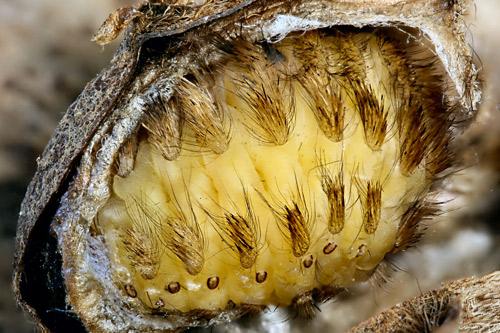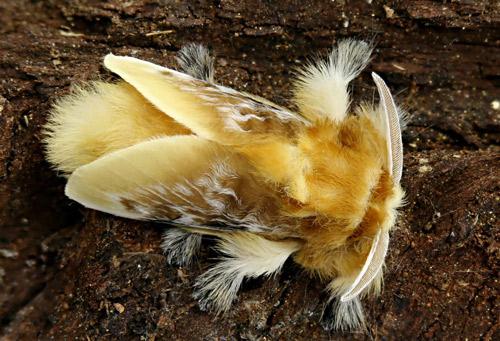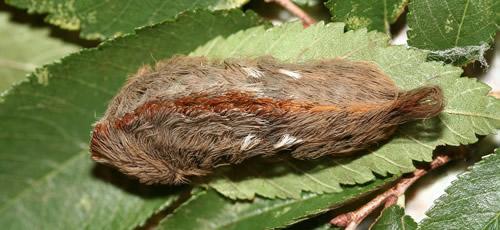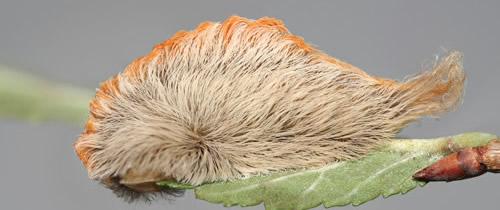PUNTA GORDA, Fla.–Something small and fuzzy—and somewhat cute—is crawling all over Florida this time of year.
But those innocent-looking bristles covering the inch-long tawny caterpillars can deliver a painful, venomous sting. Look, but don’t touch, experts warn.
According to the Fish and Wildlife Foundation of Florida, the caterpillars are about an inch long and covered in hair-like bristles with an orange streak running down their back. They are classified as an insect and can be found on oak and elm trees during the summer and fall months.

In the course of his day, Cannon will climb trees to trim them and, while standing under a tree supervising others, may also get hit by falling tree foliage.
“I consider myself to be a pretty tough individual,” Cannon told The Epoch Times. “When I got stung, it almost made me cry like a little girl.”
The sting of this caterpillar equates to one that “feels almost like being stung by a Portuguese man o' war or a jellyfish,” Bill Kern, Associate Professor at the University of Florida, told The Epoch Times.
“The reaction is generally local–so it’s going to be painful,“ he said. ”And, in some cases, if you actually get one down your shirt, you can get numerous stings.”
Kern said that, depending on how much pressure is placed on the caterpillar and the person being stung, you can sometimes see a “red grid-like pattern” that looks like the pattern of the venomous spines on the caterpillar.

The caterpillars will eventually turn into moths and their purpose in life is to “reproduce and produce new models for the next generation,” he said.
“They’re pretty well protected from most vertebrates,” Kern said. “Most vertebrates can’t, or won’t, feed on them—at least [not] after the first time.”

Parents need to warn their children about these caterpillars, Kern said.
“I do not have any data on this, but I think little girls are more apt to try to pick it up because it is furry and they would want to pet it,” he said. “However, little boys are more likely to take a stick and poke at it.”
Pets are not as affected because the caterpillar lives in the tree canopy and most pets are not going to be up there, he said.
“It is less likely that a pet will be exposed to it—more likely cats than anything,” he said. “The caterpillars are normally six feet above the ground.”
Lisa Thompson, of Florida Fish and Wildlife Conservation Commission (FWC), said that the caterpillars do not seek out people to bite and the public should not fear them, but take care to admire them from a safe distance.
“This species of caterpillar has venomous spines hidden amidst an extremely hairy/furry body to protect itself from predators; however, unless directly handled, they do not pose a threat to people,” Thompson told The Epoch Times in an email. “They’re also beautiful and ornate; if you observe one, simply appreciate (it) from a distance.”
Kern agreed and offered advice on how to deal with a sting from the caterpillar.
“Probably the most common thing to do is take a piece of tape and make sure that all of the stinging hair has been removed from the skin,” he said. “That will reduce how much venom gets into the skin.”
After removing the spines you may want to apply an ice pack to the affected area for swelling; also, hydrocortisone cream and taking an oral antihistamine might bring some relief, Kern said.

That is advice that Cannon said he can get behind.
“I never thought of tape before,” he said. “In the past, I'd try to find someone who has a cigarette or tobacco, wet it, and apply to the affected area; that draws out some of the venoms. All I know is that it hurts.”
Allergic reactions have not been recorded in association with the caterpillar stings, but Kern said he would not rule it out.
“You’d have to have been stung previously (to get an allergic reaction),” he said. “You don’t have an allergic reaction based on one incident.”
Kern said the caterpillars are highly unlikely to sting a lot of people because they are in the canopy of hardwood trees.
Cannon said his advice to anyone moving to or visiting Florida is to remember that everything in Florida “has teeth and bites.”
“Everything here bites,” he said, partly in jest. “From mosquitoes to alligators–people need to know and respect this about Florida.”





Friends Read Free